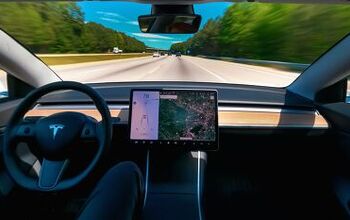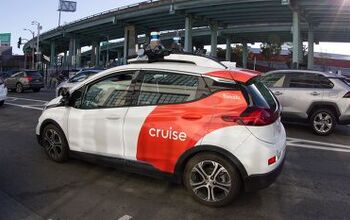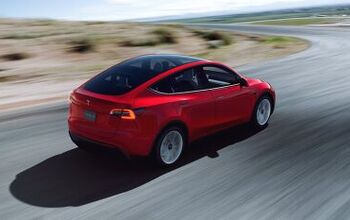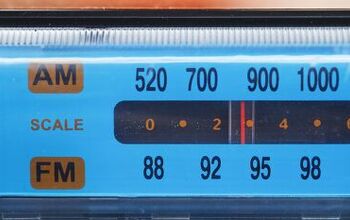Tesla Death Watch 9: 8-Hour Recharge Time. In Theory.
The mainstream media jumped all over the story that the Tesla Roadster had "begun full production" on March 17 (of this year), And then… nothing. How long will deposit-paying customers wait for their $98k– sorry, $109k lithium-ion-powered carbon fiber-skinned and modified Lotus Elise? Tesla must be wondering the same thing. The Stamford Advocate reports that the Silicon Valley start-up has taken their Roadster on the road, calming customers' impatience with 20-minute demo drives. Potential Tesla owner and "media company executive" Gary Patrick was realistic about the car's core appeal: ""You can still feel like you're fulfilling your green responsibility and reducing your carbon footprint with a car like this." We also learn that Tesla's national sales manager reckons her customers could, in theory, recharge their Roadster using "smaller, 110-volt sockets used for a living room lamp or television set." Only "charging that way could take as long as 30 hours, compared with eight hours on a larger circuit." Hang-on; setting aside the fact that no one has confirmed ANY recharge time, what happened to the highly-touted three-hour recharge cycle? Same thing that happened to the Roadster's 250-mile range. Or the idea of selling the Roadster as a "true" sports car. "For now," Allen prevaricated, "Tesla plans to sell its luxury products largely on the appeal of its eco-friendliness." Plans to sell, as opposed to selling, 'cause selling implies delivery, of course.
More by Robert Farago


































Comments
Join the conversation
Time to charge aside, does anyone know how much power it takes to fully charge a roadster? How many kilowatt hours does a full recharge consume?
Tesla states in their battery system blurb that the battery stores 53 KW hours of go juice . Average cost of electricity is about 10 cents/kwh. This works out be about 2.5 cents per mile if the 200 mile range is correct and conversion losses due cables etc are held to a minimum.
Lets Assume for a minute that it is relatively painless to install a 220 volt circuit in your garage and that Tesla made a $30,000 sedan, would this new found electric utopia really be a "carbon neutral" solution. First off, what about the embodied energy it takes to manufacture the super battery used to power the car, or the toxic waste issues attached to the end game of disposing of such a battery? Secondly, what about the impact to the energy grid of adding hypothetically another 220 volt outlet to every home in America and cranking it to full for 8 strait hours every couple days? Isn't L.A., an already vehicle dependent metropolis, experiencing massive energy blackouts already during the summer due to maxing out the electric grid? Oh, and don't tell me a solar roof is going to supply the kind of power needed to charge these things, not to mention the embodied energy in making and disposing of your solar roof system, which being as it would be charged during the day would require a means of energy storage inevitably meaning more batteries and more toxic waste in the long run. I agree with whomever said automobiles themselves are not a sustainable solution, electric, hybrid, hydrogen cell or otherwise. We need to think cradle-to-cradle if we want to truly be "green."